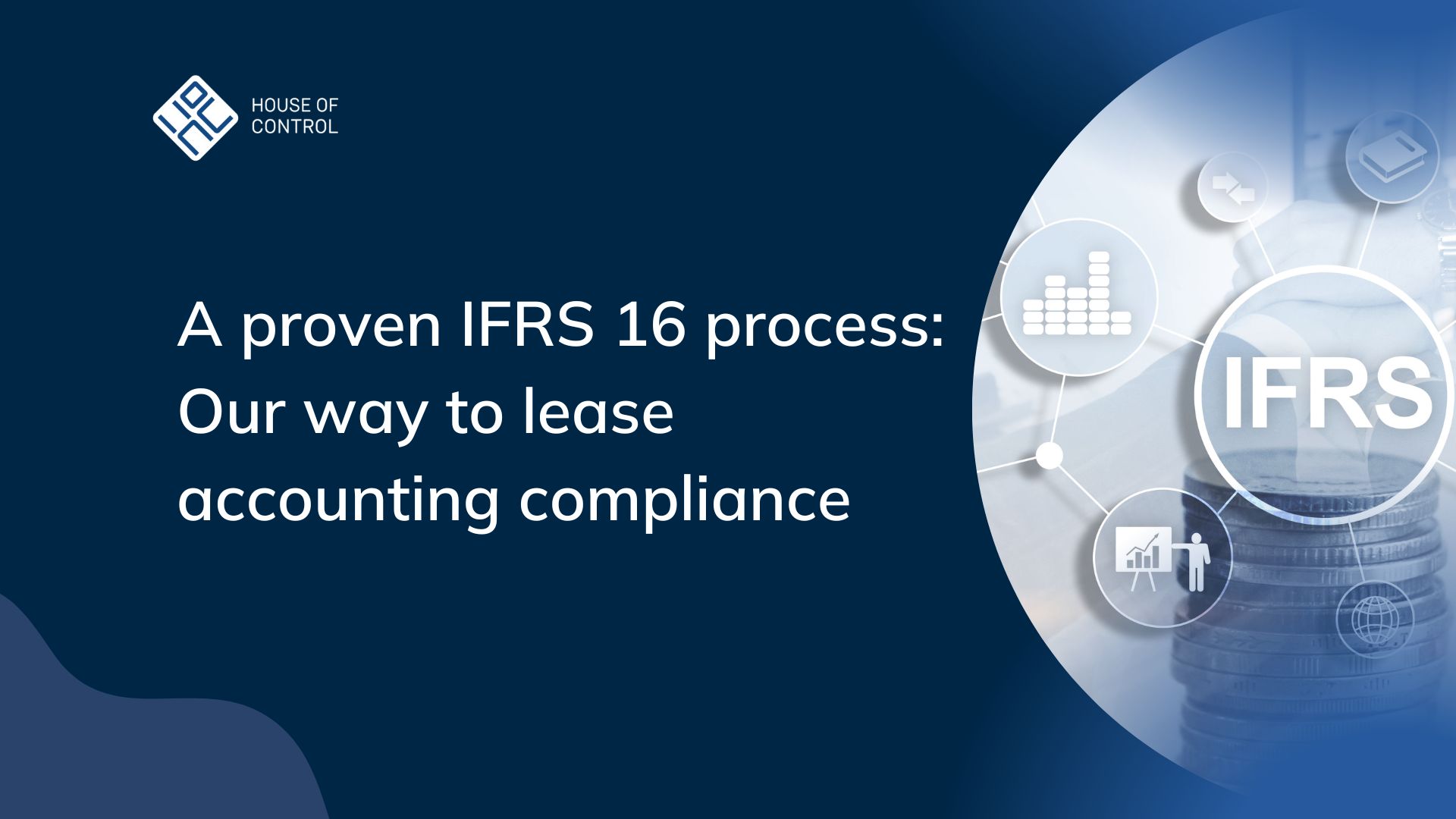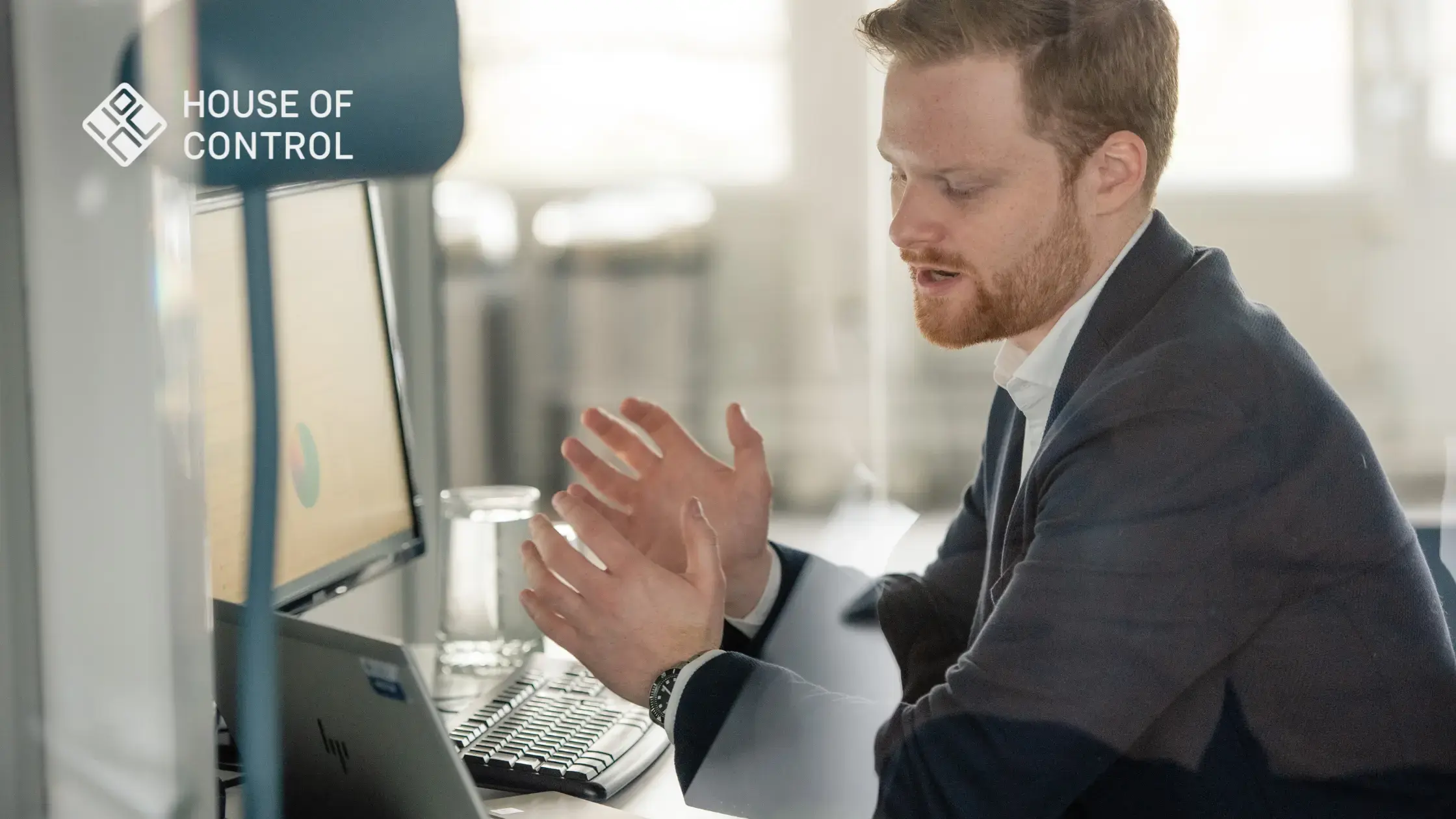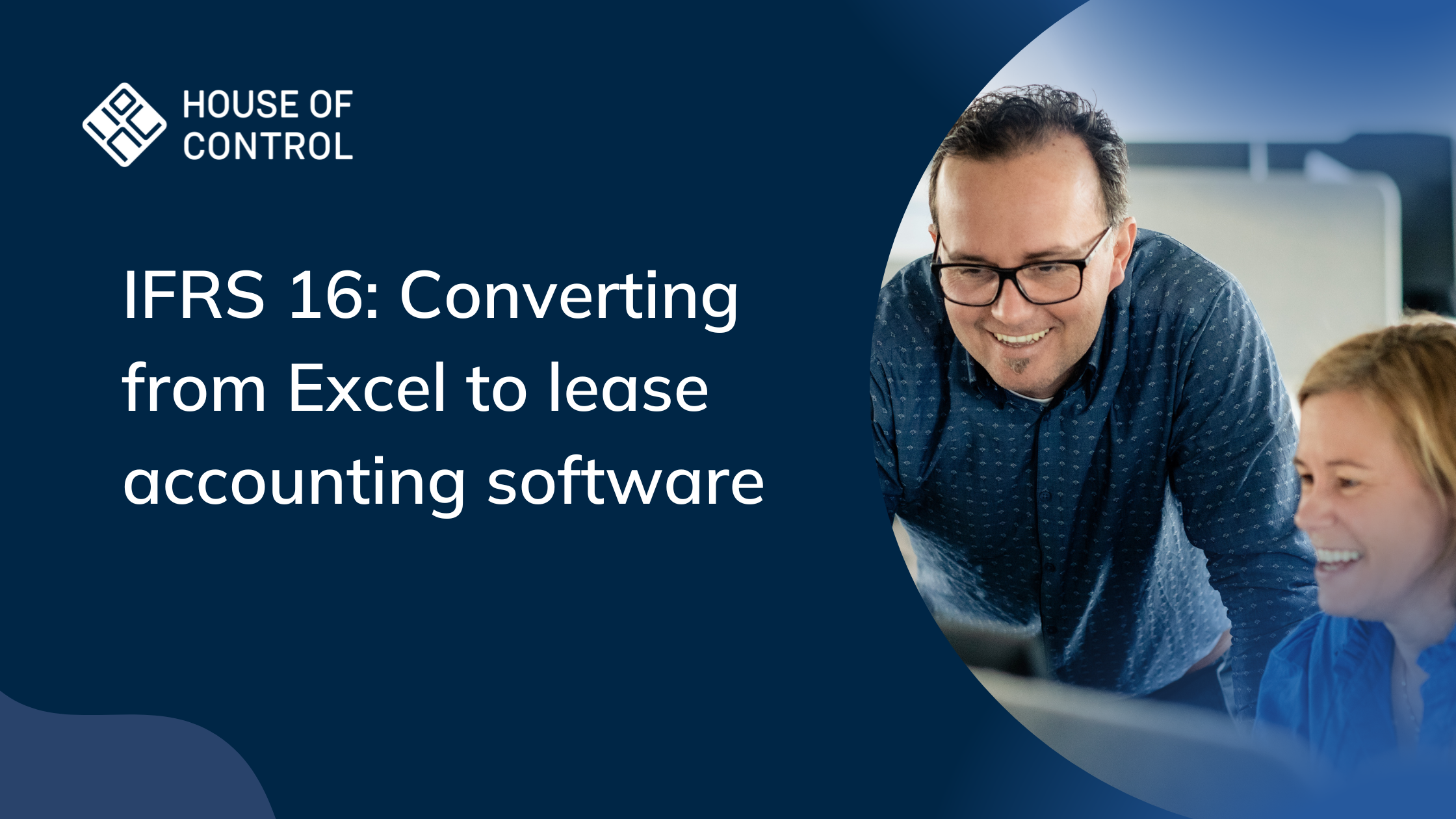How to Achieve Lease Accounting Compliance with IFRS 16 for IPOs
Balance sheet recognition of leases is a crucial task that the finance department must tackle before a company goes public. It is a complex process that requires careful planning and adherence to the International Financial Reporting Standard IFRS 16 requirements. In this blog post, we will go deeper into the effective approach that our CFO and finance department followed to ensure compliance with IFRS 16.

House of Control Group was listed on the Oslo stock exchange in October 2020. What was a significant step for the company involved both intense sprints and demanding marathons for the finance department. Shortly after the IPO, House of Control chose to convert the financial statements from local NGAAP to IFRS. It took many late nights, and among the tasks was the challenging IFRS 16 standard.
How did they practically proceed—from start to finish—to ensure that House of Control became compliant? We have gone through the "diaries" and working methods of CFO Carl Fabian Flaaten and Head of Finance and Controlling Pål Havneraas.
The keywords that emerge are thorough preparation, diligence, and a secret weapon.
Reference Guide for IFRS 16: Here is the approach that our own finance department chose
1. Comprehensive understanding of IFRS 16
We began by familiarizing ourselves with the standard itself, and we reviewed excellent reports from our own auditor on how the rules should be interpreted. Those of us who worked in the department during the conversion to IFRS had different levels of experience with the standards, and through formal and informal meetings, we helped each other gain clarity on what the standard would require.
2. IFRS 16 for our company
Companies in various industries will have varying types of leasing contracts, presenting different challenges in meeting the IFRS 16 requirements. House of Control is a Software-as-a-Service company with a limited number of leases. The most significant lease agreements we have are for office spaces in Norway, Sweden, and Denmark. Therefore, it was important to understand how property leases should be handled.
3. Consult with the auditor
For many reasons, it is important to choose an approach that the auditor will acknowledge, and the auditor is also an excellent advisor. Hence, we contacted the auditor early on, because they have broad and deep IFRS 16 expertise. Did we understand the standard? Did the auditor agree with our view of the challenges ahead? What requirements would they set in the audit? How could they assist us in the process?
4. Identify the leases
We then started the practical work of reviewing all existing contracts, and we also looked at contracts other than those for office spaces. Did we have contracts that were previously categorized as operational leasing agreements and were thus not previously recognized on the balance sheet? Did they qualify as leases under IFRS 16? Was the amount significant (over 5,000 euros)? Was the contract of sufficient duration to be recognized (over 12 months)?
5. Gathering IFRS 16-relevant data
Leases, such as those for office spaces, are not structured to fulfill the data requirements of the IFRS 16 standard but rather to be effective lease agreements for operating our offices. Therefore, it took considerable time to define key parameters such as lease payments, lease terms, extension options, lease incentives, and other relevant information required for accounting under IFRS 16.
6. Choose an appropriate transition method
When our existing lease and leasing contracts were to be recognized on the balance sheet for the first time, we had to choose from the two transition methods allowed by IFRS 16. Retrospective approach or modified retrospective approach? The former requires restating comparable figures. The latter involves adjustments on the date of initial application. We opted for the modified retrospective method, which offered two choices: Either recognize the right-of-use asset at the same amount as the lease liability at the inception date, or recognize the right-of-use asset at the present value at inception (contract start) and amortize from that point.
7. Define the lease terms in each contract
From an accounting perspective, the lease term is important because it is the period during which the company has a contractually stipulated right to use the underlying asset, such as the office. Extending the lease term by exercising options is often relevant. If one expects to exercise extension options, these must also be considered.
8. Define the lease payments
These are the payments that the company will make over the lease term. These needed to be indexed based on the expected rental payment increases.
9. Select the discount rate
For each lease, we applied a discount/borrowing rate. This is used to discount future cash flows of lease payments and thus calculate the lease liability. Different companies will have different rates depending on their risk, currency, and duration of a lease contract. In accordance with guidelines and recommendations, we chose a rate equivalent to what we would obtain if we borrowed to finance the purchase of office spaces.
10. Calculation of initial RoU asset and lease liability
RoU (right-of-use) represents the value of the right to use an underlying asset and can be compared to the capitalized value of an investment. A lease liability represents the commitment to future lease payments. We calculated the discounted cash flows of future lease payments. At the date of application, RoU and the lease liability are equal.
11. Subsequent measurement of RoU and lease liability
After the commencement date, we measured the right-of-use asset at cost less accumulated depreciation over the expected lease term. Lease liabilities were subsequently measured by increasing the carrying amount to reflect interest on the lease liability and reducing the carrying amount to reflect lease payments made. Moreover, right-of-use asset and lease liability were both remeasured to reflect any reassessments or lease modifications.
12. Update accounting systems and other processes
When all the aforementioned figures were in place, the next step was to use them to calculate the figures for the financial statements. We opted for a solution that would make it fast, simple, and predictable to recalculate the figures later. At House of Control, we are in a unique position when it comes to these processes, as we have developed a market-leading IFRS 16 solution ourselves. We not only used this to accurately calculate balance values and amortizations but also gained exceptional cost control and an overview of future obligations. And yes, our finance department played a key role in developing the solution. That's why it's so user-friendly.
13. Update financial disclosures
With accurate figures calculated, these were transferred to the financial statements. In the notes to the financial statements, we provided additional information about the nature of lease or leasing agreements, the amount and timing of lease payments, as well as the recognized value of lease liabilities and right-of-use assets. We also adjusted the company's financial statements, including the balance sheet, income statement, and cash flow statement, to reflect the impact of the new lease accounting under IFRS 16.
14. Review and finalize financial statements
Perhaps needless to mention, but with the updated financial disclosures in place, we reviewed and finalized the financial statements with the new data. We also presented figures for the preceding year and how they would have been affected by IFRS 16.
15. Follow-up and internal controls
With our own IFRS 16 solution, it’s efficient to monitor existing and new leases in accordance with the standard's requirements. The digital solution also aids us with critical notifications, essential for monitoring both lessors and the accounting-technical aspects of the contracts. However, we recommend creating new guidelines and procedures for improved internal control.
16. Auditor’s assurance
When everything was done, it was time to check with the auditor again. Did we do things correctly? Let's conclude with another not entirely unbiased assessment: When the auditor gained access to the calculations we had made in the digital solution, the auditor was able to quickly confirm our compliance. And we knew that the next time we would perform the same calculations – every a quarter in public reports, every month to the board of directors – it would be straightforward to update them without going through the entire process again.



